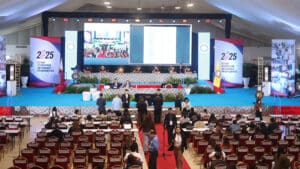Cash sent home by Filipinos overseas through banks stayed at the $2-billion level for the 13th straight month in February even as year-on-year growth slowed on seasonality.
Bangko Sentral ng Pilipinas data released yesterday showed that cash remittances reached $2.17 billion last February, the same amount as in January.
The February figure was up 3.4 percent from $2.1 billion a year ago, although year-on-year growth was slower that last year’s 8.4 percent and the previous month’s 8.6 percent.
Monthly cash remittances have remained above $2 billion since February last year.
In a statement, the BSP said more than three-fourths or $1.7 billion of the cash remittances sent home in February came from land-based employees, while the remaining $500 million were from sea-based workers.
The top six contributors to cash remittance growth last February were Japan (up 11.3 percent year-on-year), Qatar (up 53.5 percent), Singapore (up 17.5 percent), Taiwan (up 64.4 percent), the United Arab Emirates (up 23.7 percent) and the United States (up 12.8 percent).
But the BSP said remittances from Canada, China, Hong Kong and Kuwait posted declines in February.
End-February cash remittances amounted to $4.34 billion, 5.9-percent higher than the $4.1 billion during the first two months of last year.
During the first two months, cash remittances from land-based workers rose by 9.1 percent to $3.5 billion, compensating for the decrease by 5 percent to $900 million in sea-based workers’ transfers, the BSP said.
Nearly four-fifths of the cash remittances that reached the Philippines during the two-month period came from Australia, Hong Kong, Japan, Kuwait, Qatar, Saudi Arabia, Singapore, the UAE, the United Kingdom and the US.
For 2017, the BSP has projected a 4-percent growth in remittances.
In 2016, cash remittances reached a record $26.9 billion, up 5 percent from $25.61 billion in 2015.
Remittances are the biggest source of foreign exchange income for the country, helping insulate the domestic economy from e xternal shocks by ensuring the steady supply of dollars in the system.



